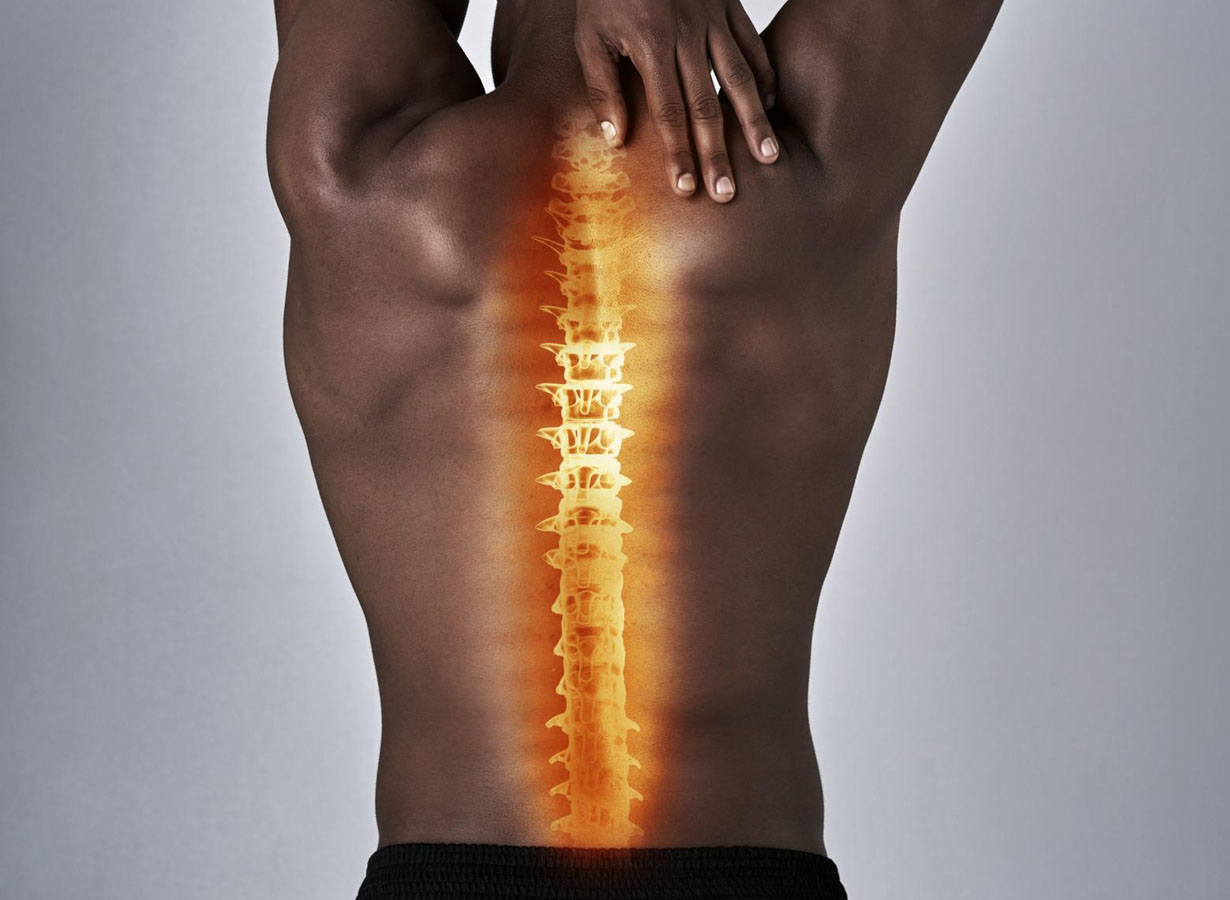The vertebral column is made up of individual vertebrae. Between each adjacent vertebrae, there is an intervertebral disc. On either side, extending outward, the vertebral column has bony projections, referred to as articular processes. Adjacent articular processes form facet joints. The spinal cord is protected by the vertebral column and travels down the spinal canal. The spinal cord gives rise to nerve roots that supply messages to the rest of the body. These nerve roots exit via the intervertebral foramen. The articular surfaces of the spine, at which movement (flexion/bending over and extension/standing upright) occurs, are covered by cartilage. The joint also comprises a lubricating membrane (synovial membrane) and is enclosed by a joint capsule which stabilizes and distributes load through the joint.
What is facet joint syndrome? (5)
Facet joint syndrome is recognized as a degenerative (wear and tear) disorder that affects the joints at which movement occurs at the spine. This condition may also be caused by trauma or injury-associated inflammation. Additionally, this condition may accompany other spinal and rheumatic conditions. In advanced stages, it may result in nerve impingement with symptoms referring to the lower limb(s).
What we look at when assessing neck or back pain (2,6)
- We look at your posture as well as the alignment of your spine to identify the
presence of deformities. - Range of movement at your neck or lower back.
- Range of movement at your mid-back.
- Tests to determine your sensation.
- Tests to determine your muscle strength.
- Tests to determine your reflex function.
- Tests to determine your nerve’s ability to move.
- Tests to determine the ability to length/stretch.
Management (1,3,4,6)
The first line of recommended treatment is conservative management. The treatment will be directed by your physical and functional needs as well as your short and long-term goals whilst still considering the diagnosis at hand. Treatments will consist of strengthening core muscles (in the case of lower back pain) as well as stretching tight musculature. Treatment will also be hands-on in the form of joint mobilization/manipulation and massage. If the conservative approach does not provide enough symptomatic relief, a facet joint infiltration/injection is done. The injection is guided by imaging and aims to numb the facet joint to provide pain relief.
If you suffer from back or neck pain that will just not resolve, contact us on 011 027 2111 to make a booking with one of our highly skilled physiotherapists.
Bibliography
1.Cohen, S., Bhaskar, A., Bhatia, A., Buvanendran, A., Deer, T., Garg, S., . . . Zhao, Z. (2020).
Consensus practice guidelines on interventions for lumbar facet joint pain from a
multispecialty, international working group. Regional Anesthesia & Pain Medicine, 45, 424-
467.
2.Concannon, M., & Bridgen, A. (2015). Lower back pain: a need for thorough assessment. Practice
Nursing, 21, 458-463.
3.Curtis, L., Shah, N., & Padalia, D. (2022). Facet Joint Disease. StatPearls Publishing.
4.George , S., Fritz, J., Silfies, S., Schneider, M., Beneciuk, J., Lentz, T., . . . Vining, R. (2021).
Interventions for the Management of Acute and Chronic Low Back Pain: Revision 2021.
Journal of Orthopedic & Sports Physical Therapy, 51(11).
5.Perolat, R., Kastler, A., Nicot, B., & Pellat, J.-M. (2018). Facet joint syndrome: from diagnosis to
interventional management. Insights into Imaging.
6.Verhagen, A. (2020). Physiotherapy management of neck pain. Journal of Physiotherapy, 67, 5-11.

